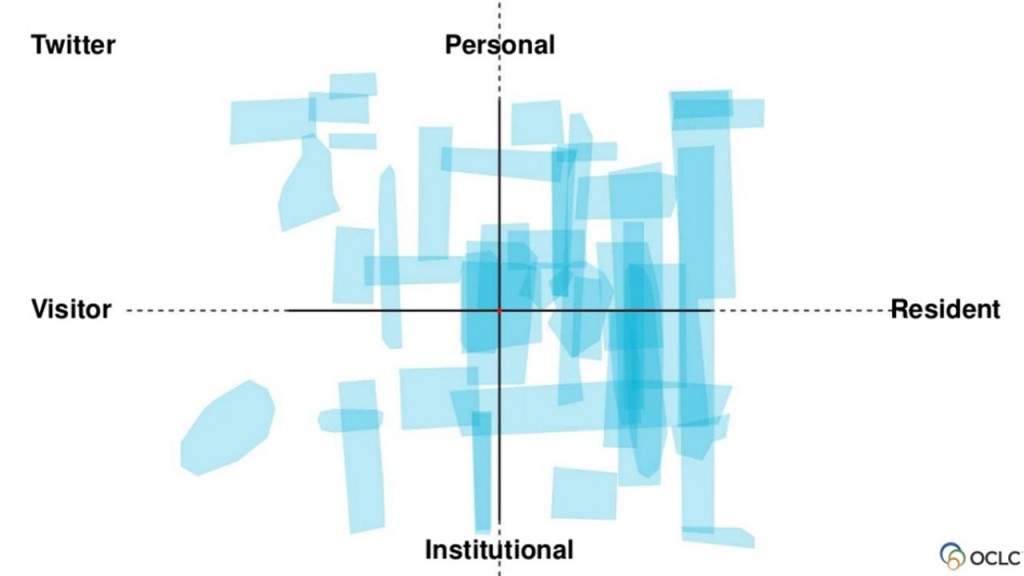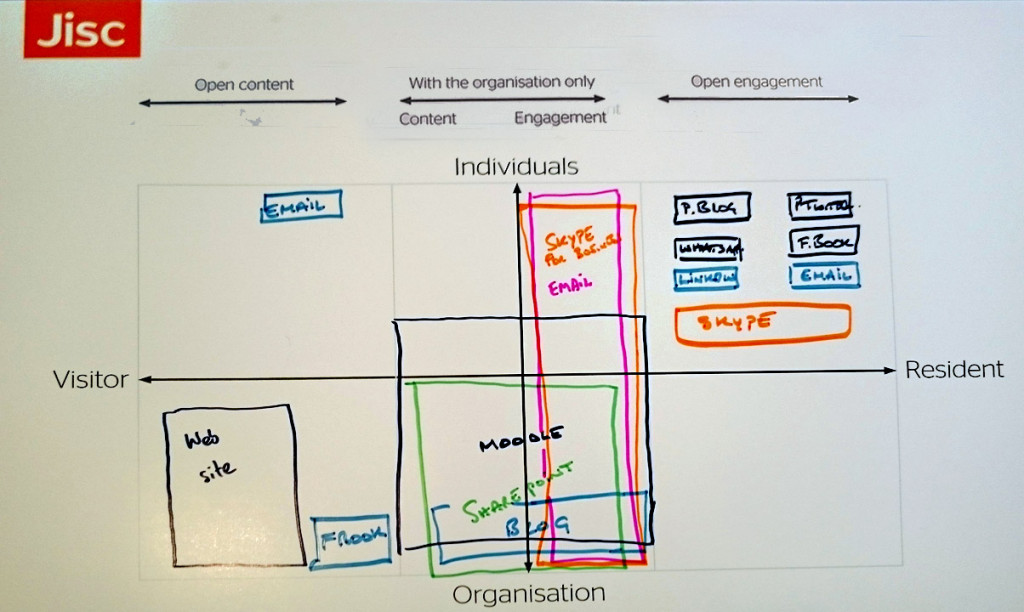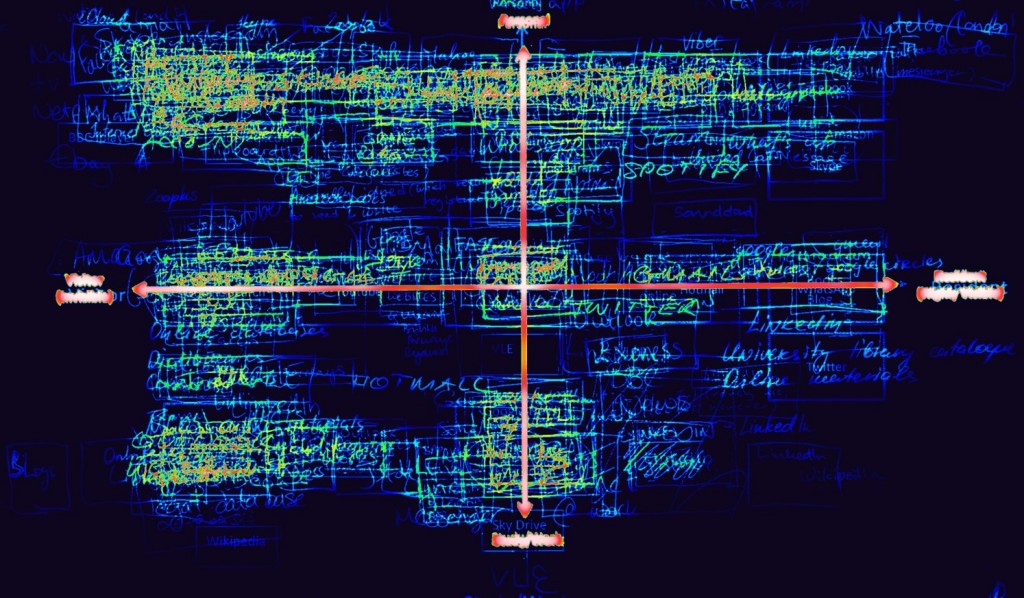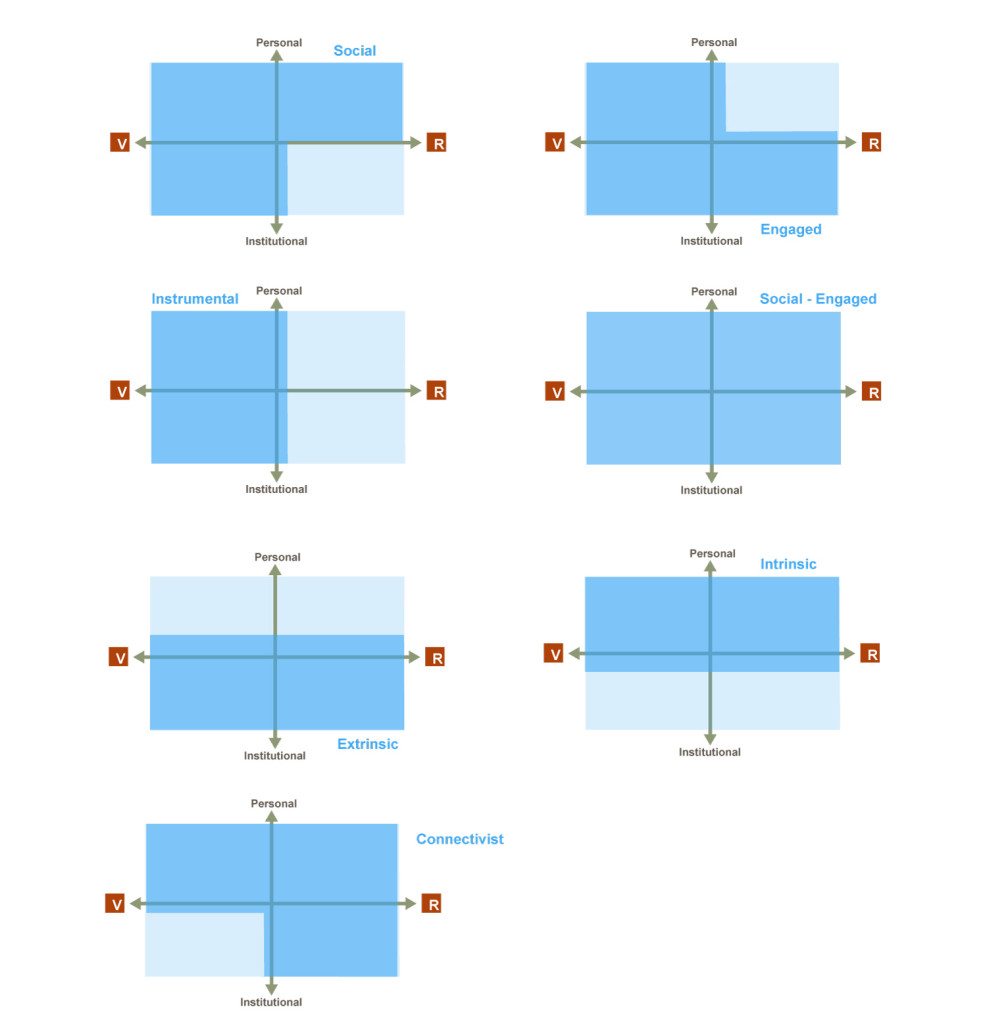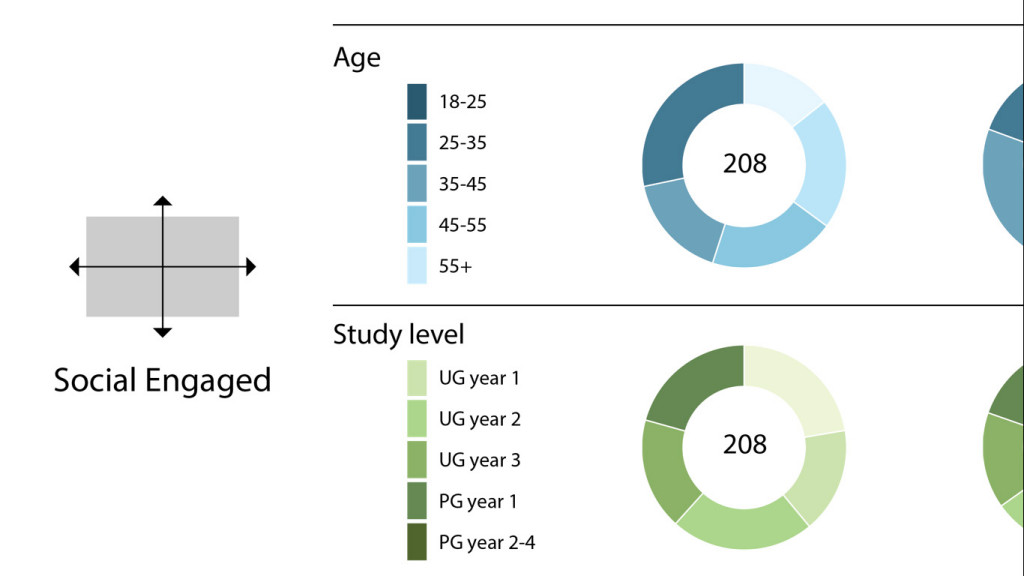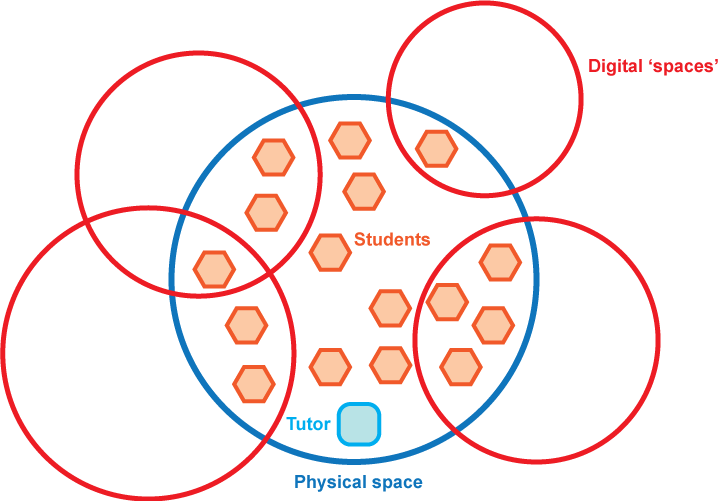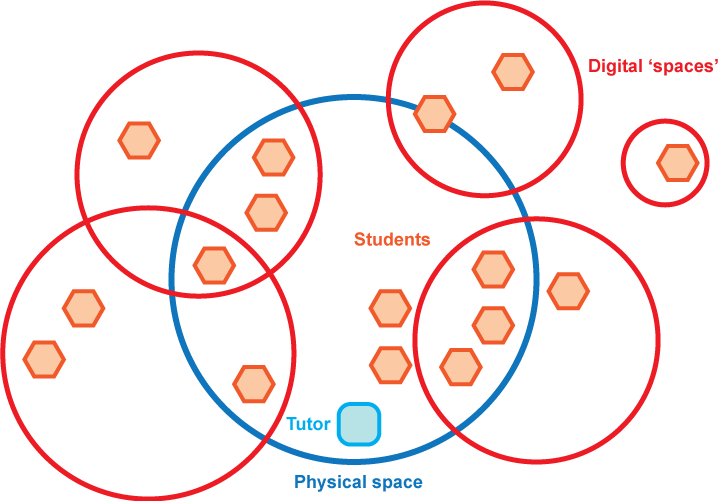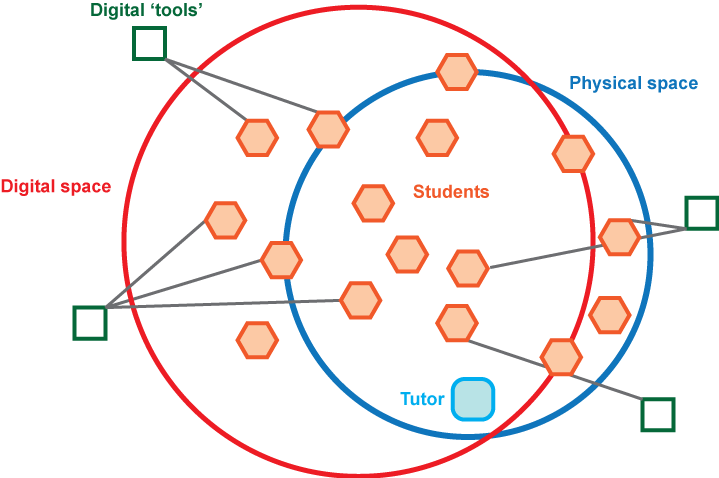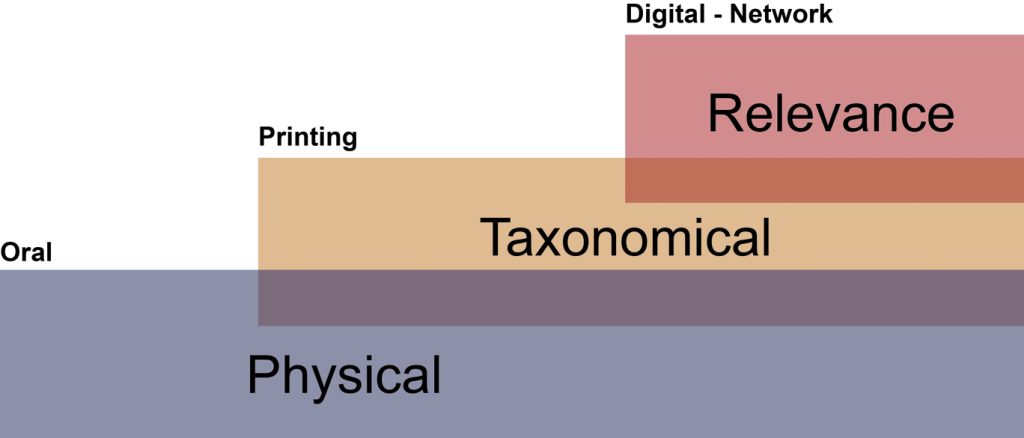This piece was written as an editorial for UKSG, an organisation “connecting the knowledge community and encouraging the exchange of ideas on scholarly communication”.
I don’t work in libraries but I often get invited to speak to groups of library staff about my views on the influence of ‘the digital’ in higher education. My role is teaching and learning focused and I argue that in the digital era academic libraries need to become a home for learning rather than content. Don’t panic, learning necessarily involves content.This is about emphasis, not a dualist polemic on throwing books away and making libraries into wifi flooded barns (those are known as coffee shops).
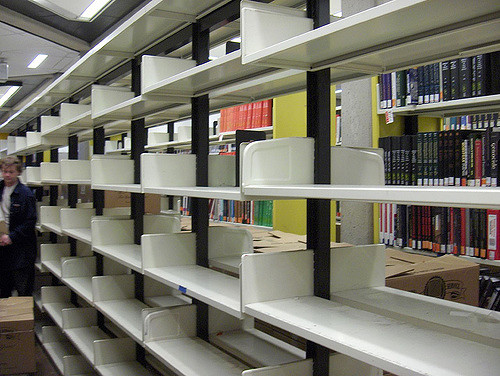
Many incoming students are caught in a trap. On the one hand they have been led to believe, sometimes explicitly, that knowledge captured in a physical form such as a book is good quality, or the home of ‘truth’. On the other hand they find much of the information they need for their studies out on the web in a number of different guises. The information they find rarely lets them down but they fear that much of it isn’t academically viable. Often they are right but this commonly has more to do with the strictures of academia than the nature of ‘non-library’ sources.
The trouble stems from our cultural love of certain forms of publishing and expertise over and above the substance of information we discover in any of the many forms it might take. For example, I remember a conversation with a publisher a few years ago in which he got excited about a near future when e-books could include videos, quizzes and be connected to the internet. I didn’t have the heart to point out that what he described was a website because I was pretty sure he wanted to sell ‘books’. . .
The other trap we fall into is confusing academia for learning. For the researcher or the postgrad these territories might naturally flow into one another but for an early-stage undergraduate the mechanisms, rules and culture of academia can often seem strangely abstract and obscure. An early-stage student I interviewed for a research project was struggling with just this when she commented that she had been told not to use Wikipedia because it ‘wasn’t reliable’ even though she had never found that to be the case. Her conclusion was that her institution wanted learning to be ‘difficult’ (but not in a good way).
Access to content ‘beyond’ the library is what’s new here and it’s at the root of these tensions. Unfortunately instead of responding to this new abundance of information by evolving and extending what it means to be a library some prefer to put effort into defending the purity of library content and historic, academic, ways of working as distinct from the web. This isn’t an approach that incoming students readily understand.
Many of our new students have a queasy sense that what Google points them to might not be the ‘best’ sources (without even knowing what ‘best’ means) but don’t yet have the academic tools-of-the-trade to discern or to harness the value of library-based content. Perhaps instead of showing incoming students how to use the library we should first be discussing why they should use the library or any source of information whether we ‘own’ it or not. So this brings me to the title of this editorial because rather than getting caught up in a discussion about the relative merits of digital and physical sources I prefer to ask, “What is the value of a library with no content?”. The simple answer is “expertise”.
In this era of information abundance what students desperately need is guidance not more content. A librarian should be an expert at navigating content, not owning it, and by extension they should be adept at helping students to navigate. This process is fundamentally a form of teaching which positions the library as directly responsible for learning rather than a ‘service’ one step removed from the pedagogical activities of the curriculum.
In addition to supporting what it takes to gain a qualification, a focus on learning, rather than content, is also required to foster digital capabilities which support what Leo Appleton described in an earlier editorial as ‘digital citizenship’. Here there is a clear opportunity to enrich students’ sense of self and empower them to influence the environments they find themselves in rather than simply working at becoming as employable as possible.
There are a number of challenges involved in moving any library towards this emphasis on learning:
- there is inherently a huge amount of process based work in keeping a library running, leaving little time to help students navigate
- it’s difficult to form meaningful teaching and learning based partnerships with academic staff are who are often too busy to engage beyond handing over reading lists
- things have changed rapidly and many people chose to work in libraries because they like to commune with content and prefer strictly defined ways of connecting with users
- libraries are not always in the habit of making the their staff visible to students as experts (see previous point)
- current roles and responsibilities don’t necessarily reflect the emerging forms of engagement (off and online) that libraries now need to foster
Forgive me, this is my view from ‘outside’ the library and is somewhat reductionist but possibly not unrecognisable? On the positive side I see academic libraries as having the flexibility to continue to adapt within an expansionist higher education sector. Some of the most vibrant thinking around ‘what it means to learn and to produce knowledge’ in the digital era has been nurtured by libraries.
There is pressure on curriculum to respond to a growing set of policies and external measures which risks dehumanising the core of what students experience. Given this it’s crucial that libraries present opportunities to engage with expertise in a friendly and person-centric manner. In a time where students can Google their way to almost any ‘answer’, access to content has become less important than access to people who understand what that content means and where to head next.









